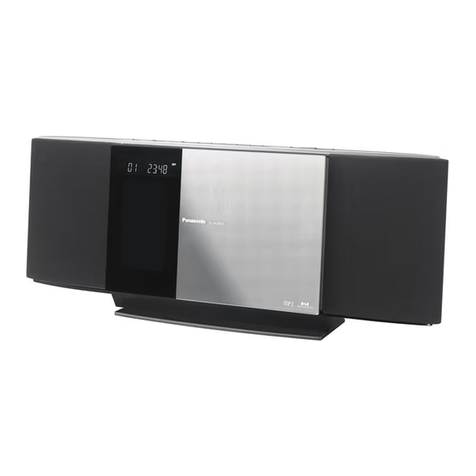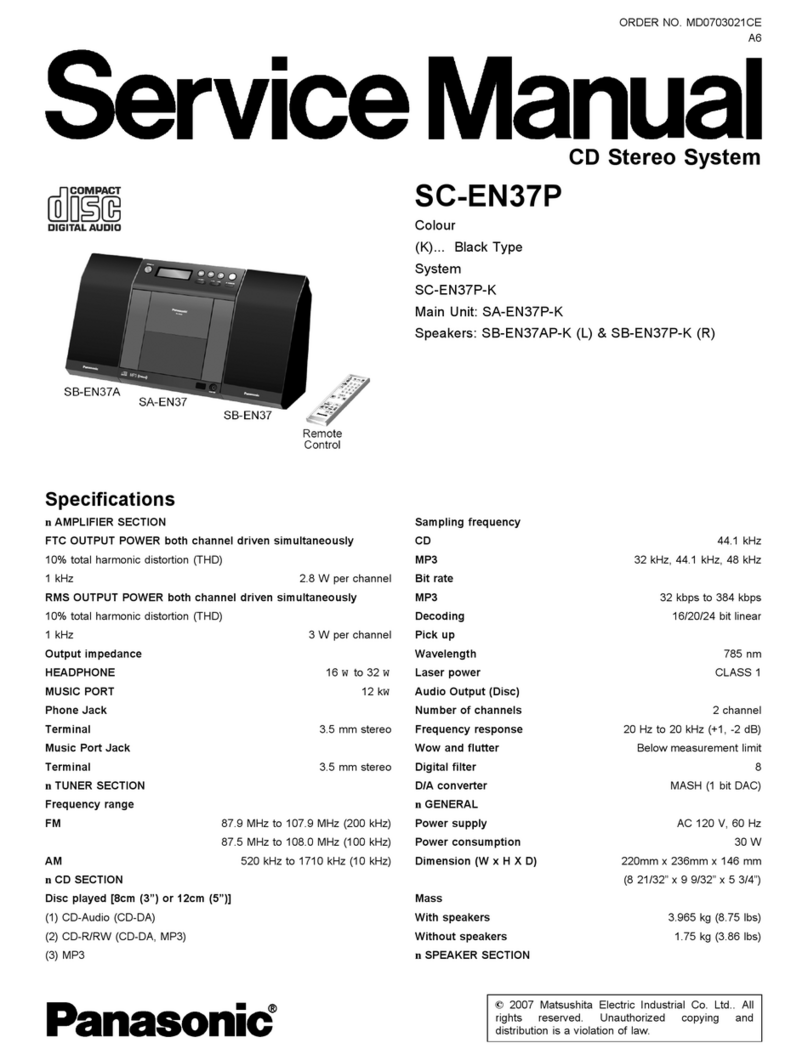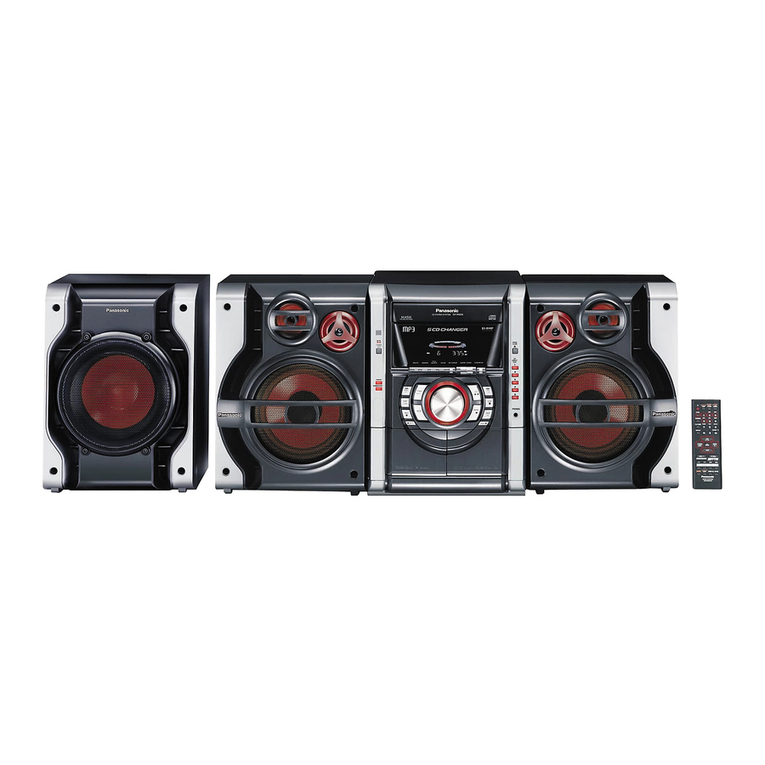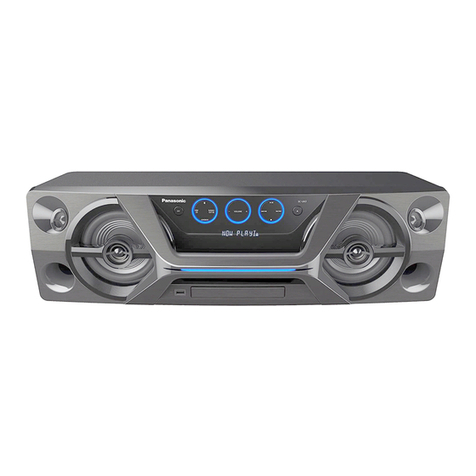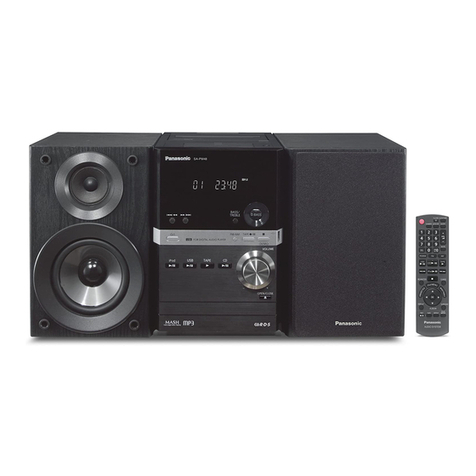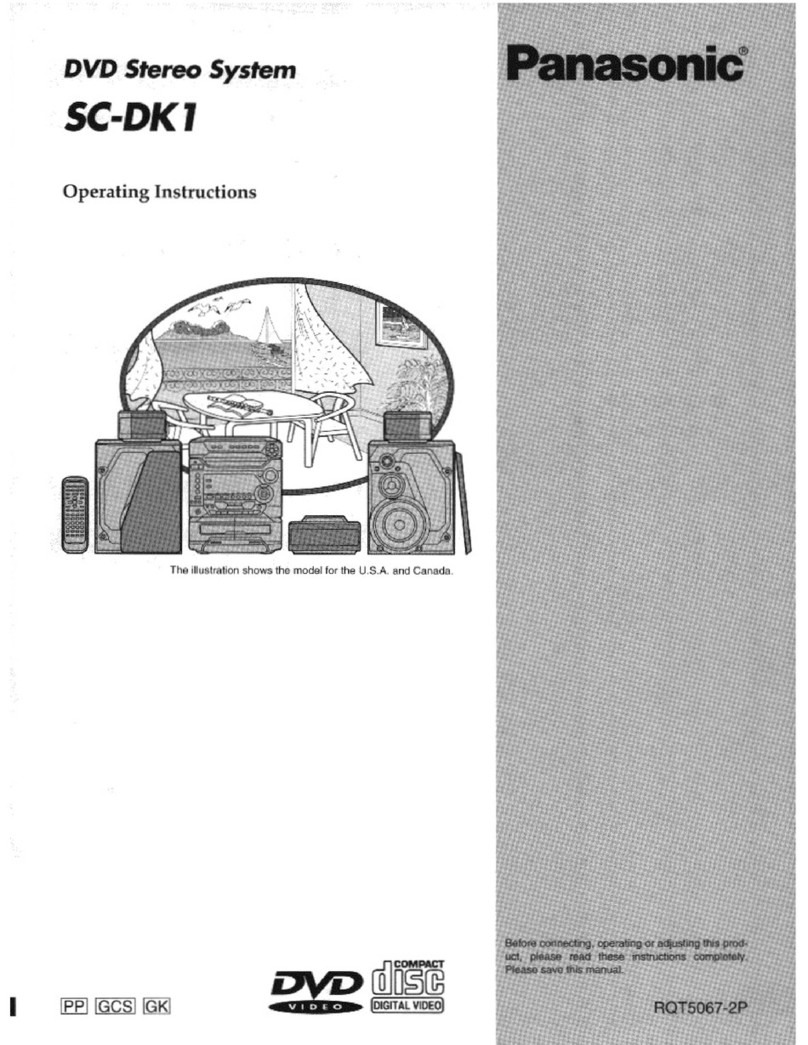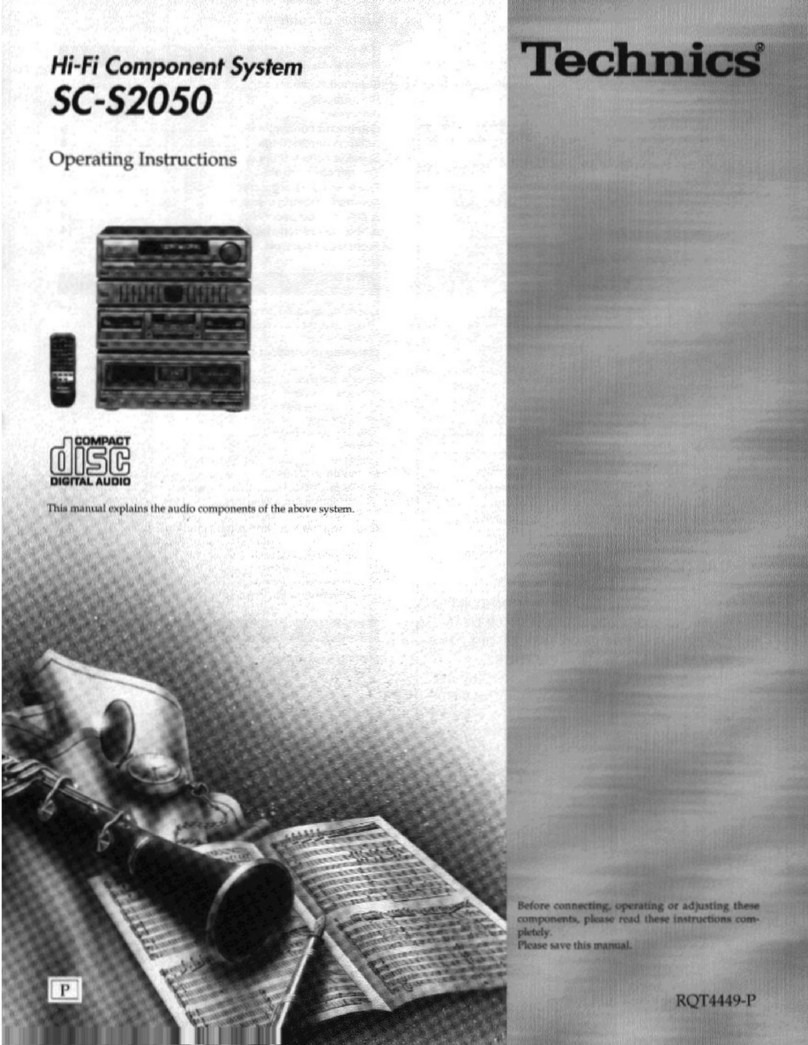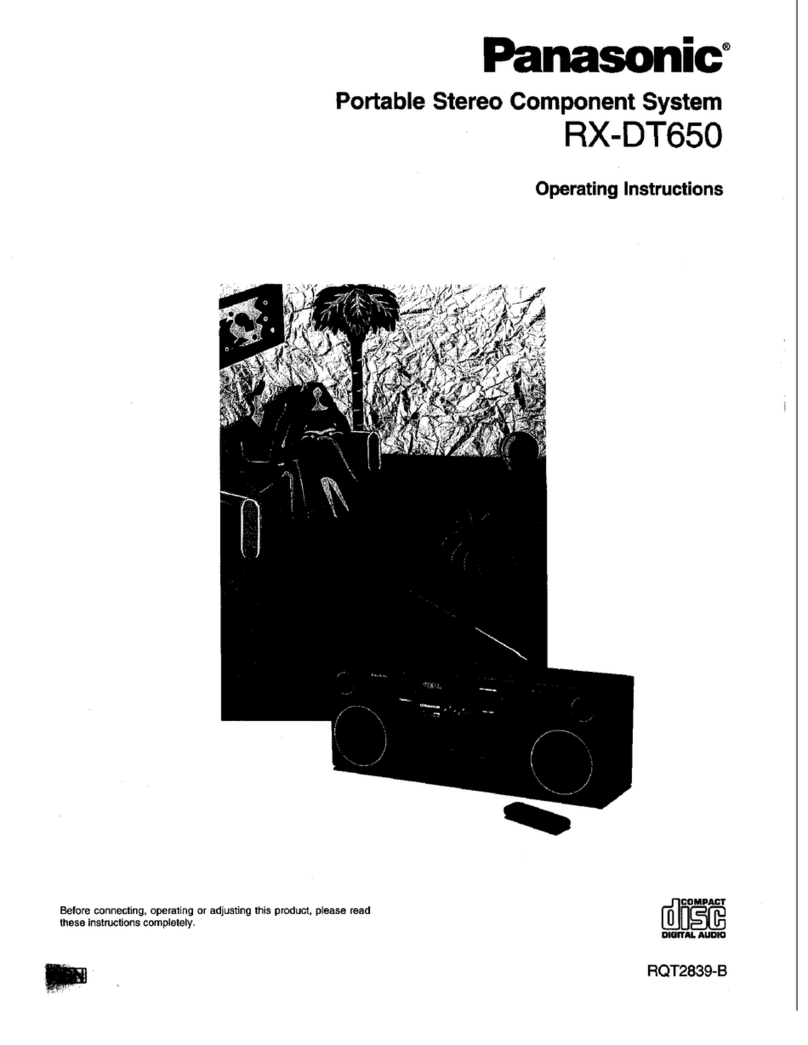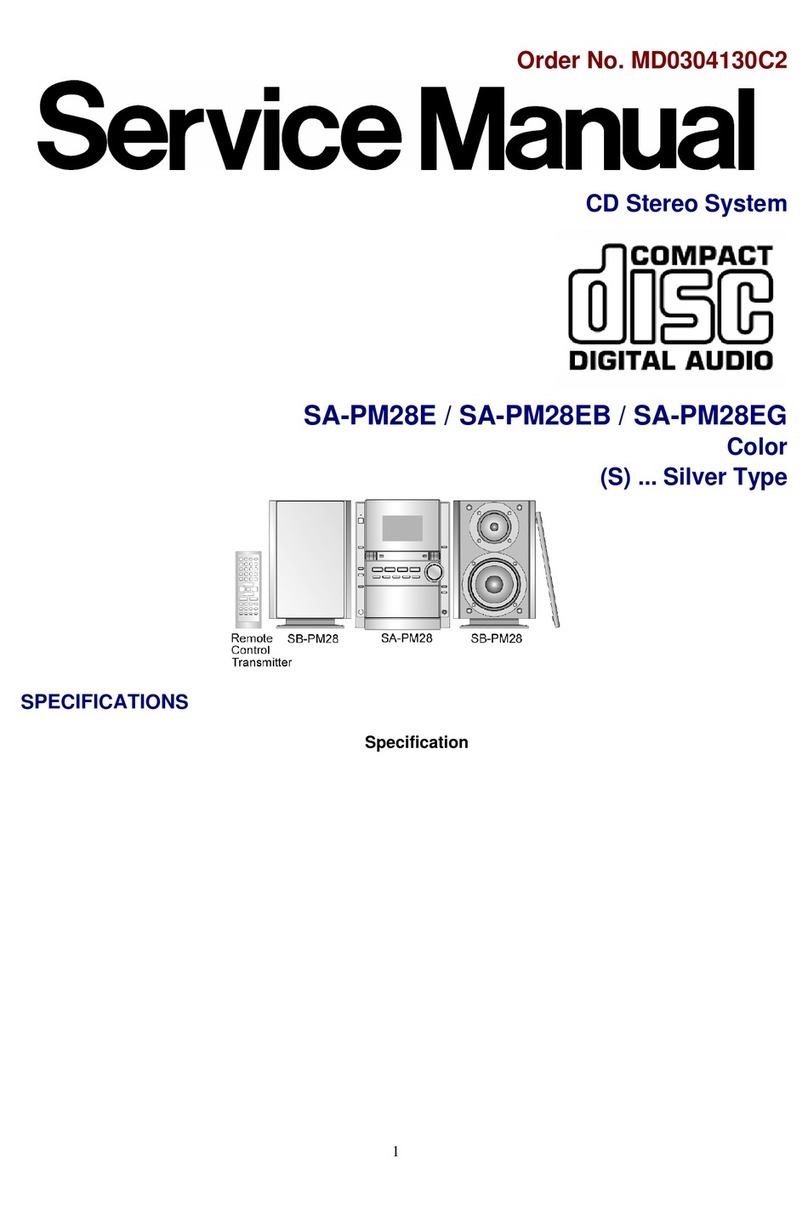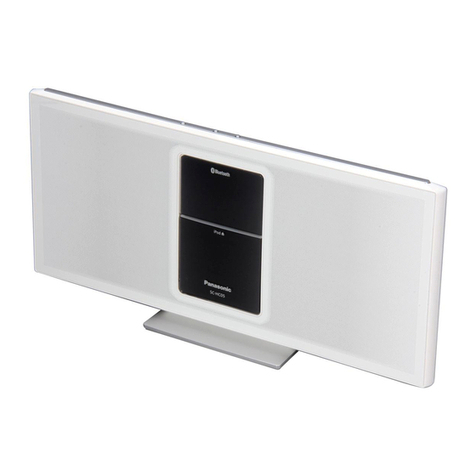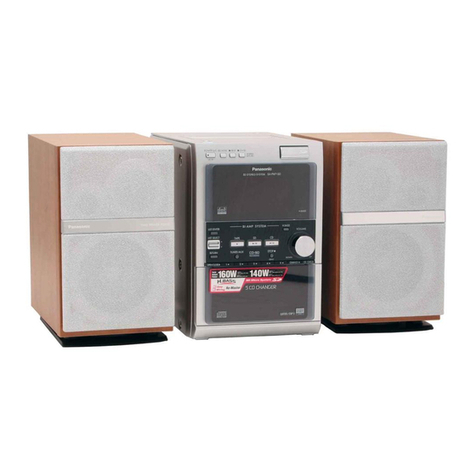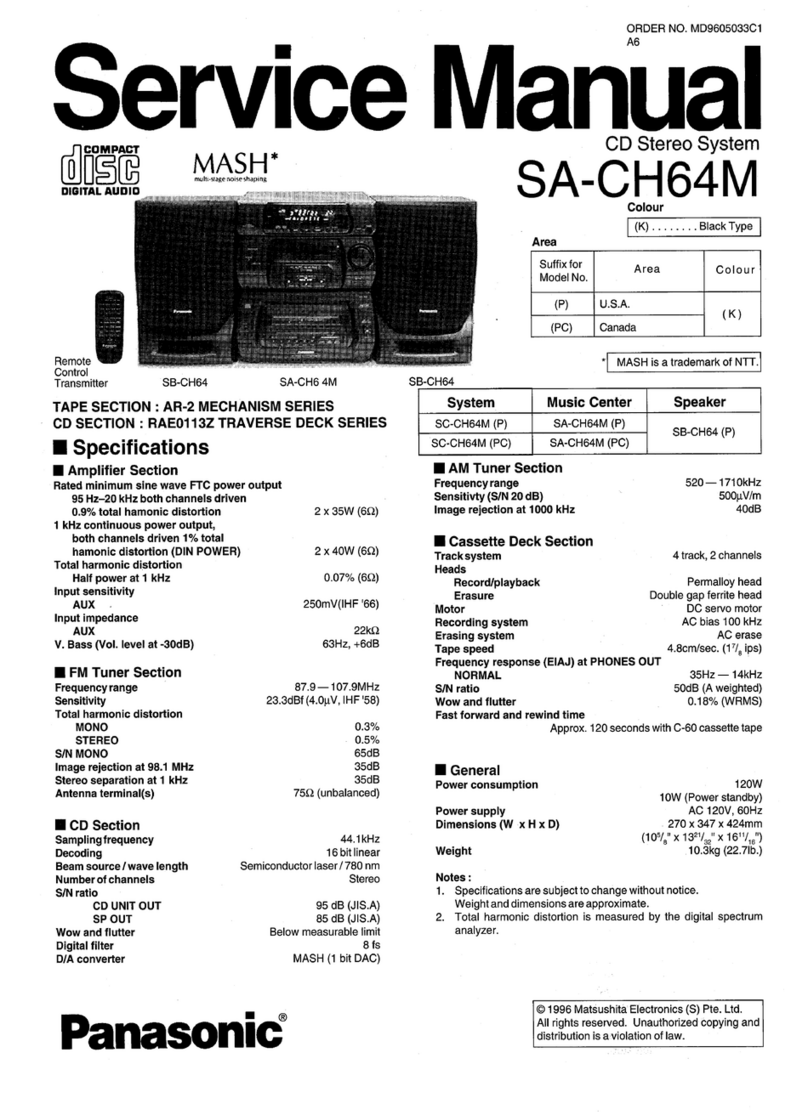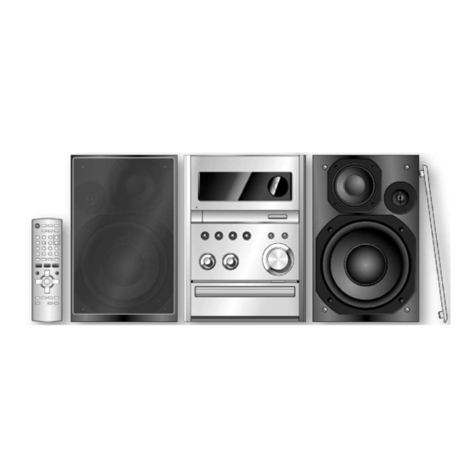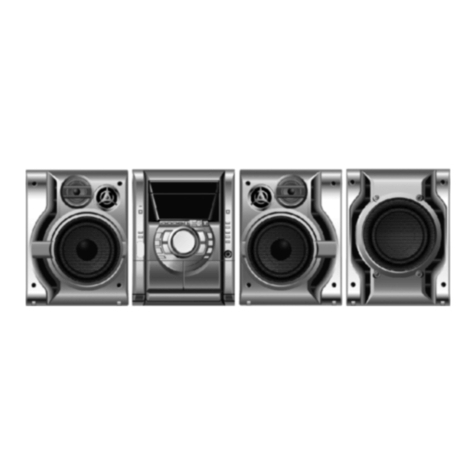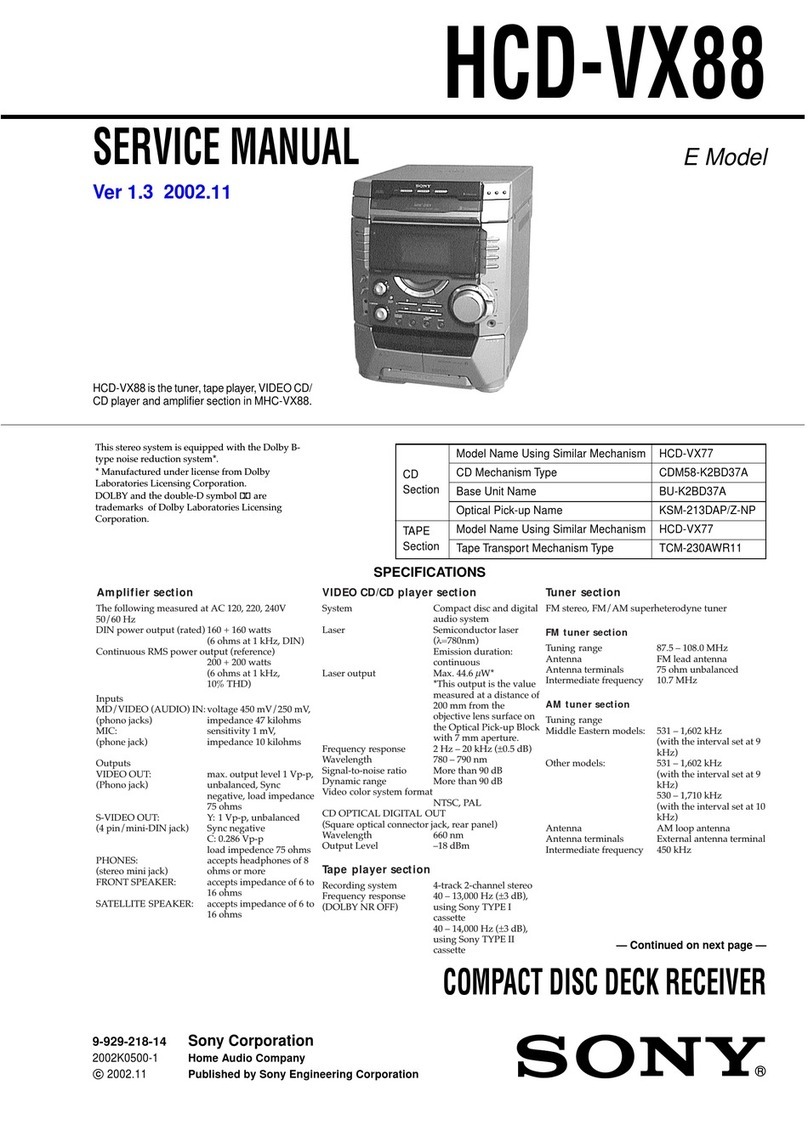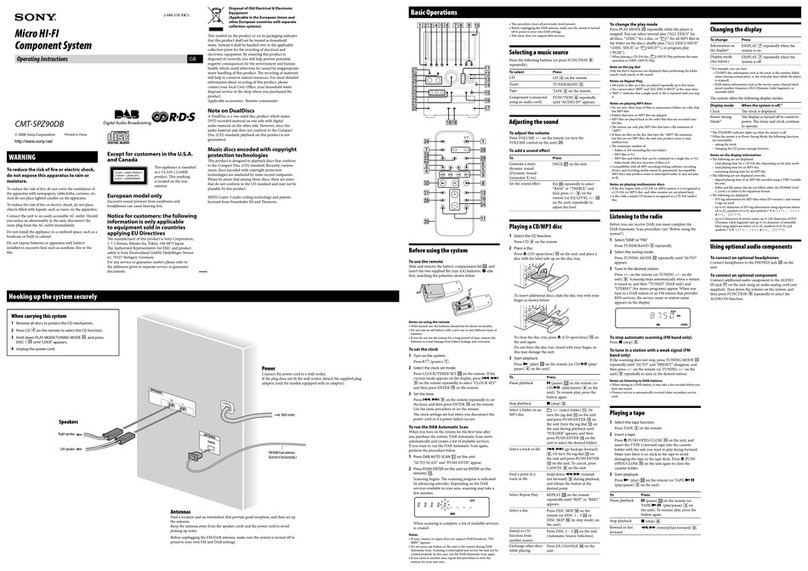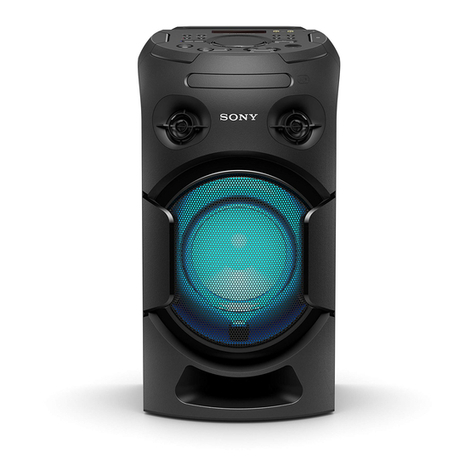
Beforeusingthisunitpleasereadtheseoperatinginstructionscare°
fully.Takespeciaicaretofollowthewarningsindicatedontheunit
itselfaswellasthesafetysuggestionslistedbelow.
Afterwardskeepthemhandyforfuturereference.
1.Power Source--The unit should be connected to power supply
only of the type described in the operating instructions or as
marked on the unit.
2, Polarizationi_f the unit is equipped with a polarized AC power
plug (a plug having one blade wider than the other), that plug wiil
fit into the AC outlet only one way. This is a safety feature, if you
are unabfe to insert the plug fully into the outlet, try reversing the
plug. If the plug should still fail to fit, contact your electrician to
replace your obsolete outlet. Do not defeat the safety purpose of
the polarized plug.
3. Power Cord Proteotion--AC power supply cords should be
routed so that they are not likely to be walked on or pinched by
items placed upon or against them. Never take hoed of the plug
or cord if your hand is wet, and always grasp the plug body
when connecting or disconnecting it.
4. Nonuse Periods--When the unit is not used, turn the power off.
When left unused for a long period of time, the unit should be
unplugged from the household AC outlet,
Environment
Outdoor Antenna Grounding--If an outside antenna is con-
nected to the receiver, be sure the antenna system is grounded
so as to provide some protection against voltage surges and
built-up static charges. Section 810 of the National Electrical
Code, ANSIiNFPA No. 70-1990, provides information with re-
spect to proper grounding of the mast and supporting structure,
grounding of the lead-in wire to an antenna discharge unit, size
of grounding conductors, location of antenna-discharge unit,
connection to grounding electrodes, and requirements for the
grounding electrode. See figure below.
ANTENNA
LEAD IN
GROUND WiRE
CLAMP
ANTENNA
DISCHARGE UNIT
_M_ENT _.__ [_j {NEe SECT{ON 810 20)
GROUNDING CONDUCTORS
__.._ " _NRFcSECT,ON 810 21)
"GROU ND CLAMPS
\,\POWER SERVIGE GROUNDING
ELECTRODE SYSTEM
{NEe ART 250 PART N)
NEC--NATIONAL ELECTRICAL CODE
2. Water and Moisture--Do not use this unit near water--for ex-
ample near a bathtub, washbowl, swimming pool, or the I_ke.
Damp basements should also be avoided.
4,
1.
2.
3.
4.
5,
6.
Heat--The unit should be situated away from heat sources such
as radiators and the like.
It also shouJd not be placed in temperatures less than 5:'C (41-'F)
or greater than 35°C (95'F).
Condensation--Moisture may form on the lens in the following
conditions...
oimmediately after a heater has been turned on.
ein a steamy or very humid room.
ewhen the unit is suddenly moved from a cold environment to a
warm one.
If moisture forms inside this unit, it may not operate properly. To
correct this problem, turn on the power and wait about one hour
for the moisture to evaporate.
Placement -]
VentilationiThe unit should be situated so that its location or
position does not interfere with its proper ventilation. Allow
10 cm (4") clearance from the rear of the unit.
Foreign MaterialiCare should be taken so that objects do not
fall into and liquids are not spilIed into the unit_ Do not subject
this unit to excessive smoke, dust. mechanical vibration, or
shock.
Magnetism--The unit should be situated away from equipment
or devices that generate strong magnetic fields.
Stacking--Do net place heavy objects, other then system com-
ponents, on top of the unit.
Surface--Place the unit on a flat, level surface.
Carts and Stands--The unit should be used only with a cad or
stand that is recommended by the manufacturer.
The unit and cart combination should be moved
with care. Quick stops, excessive force, and un-
even surfaces may cause the unit and cart com-
bination to overturn.
Wall or Ceiling Mounting--The unit should not be mounted to
a waif or ceiling, unless speciffed in this operating instructions.
("_ page 47 for details.)
Clean the cabinet, panel and controls with a soft cloth lightly moist°
ened with mitd detergent solution.
Do not use any type of abrasive pad, scouring powder or solvent
such as alcohol or benzine.
1. Damage Requiring Service--The unit should be serviced by
qualified service personnel when:
(a) The AC power supply cord or the plug has been damaged: or
(b) Objects have fallen or liquid has been spilled into the unit; or
(c) The unit has been exposed to rain; or
(d) The unit does not appear to operate normally or exhibits a
marked change in performance; or
(e) The unit has been dropped, or the enclosure damaged.
2. Servicing--The user should not attempt to service the unit be-
yond that described in the operating instructions. All other servic-
ing should be referred to an authorized service personnel.
For the address of an authorized servicenter:
In the U.S.A. 1-800-211-7262 or web site
(http:iiwww.panasonic.com)
ir', Canada 905-624-5505 or web site
(www.panasonic.caifdbc kca.htm)
